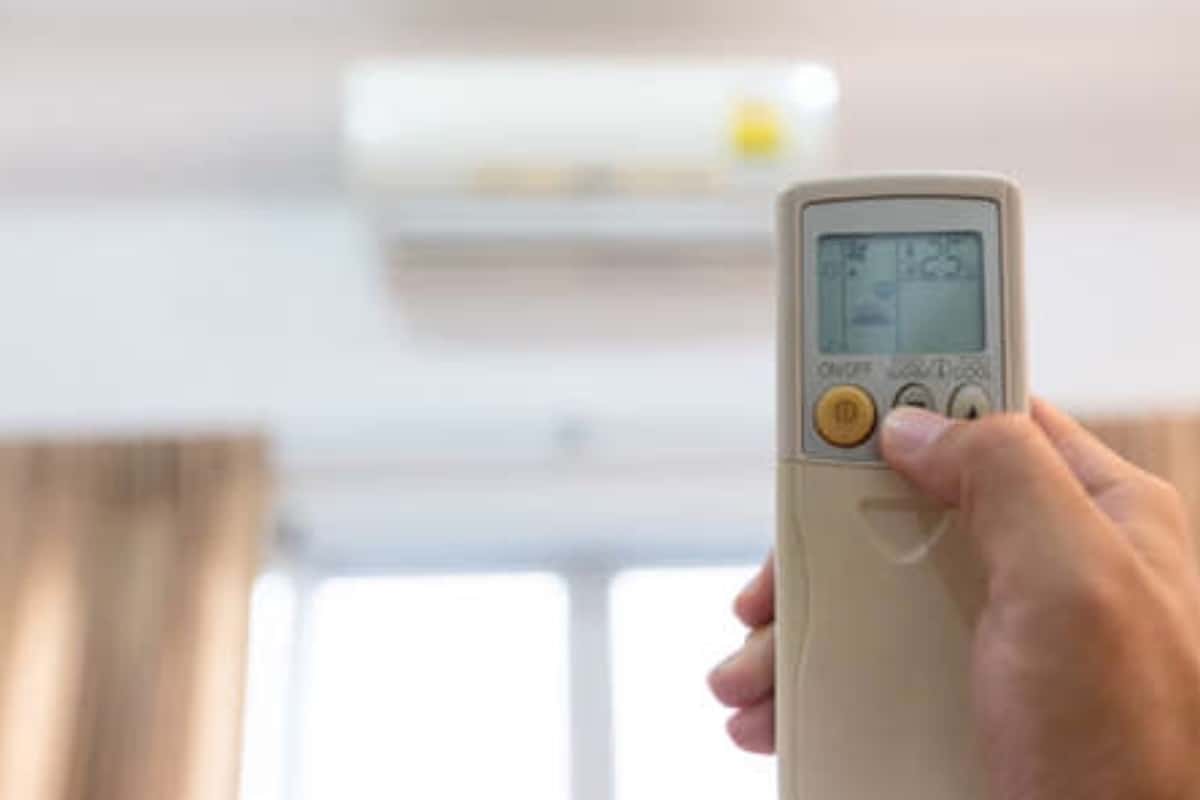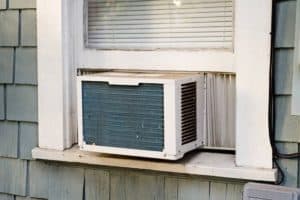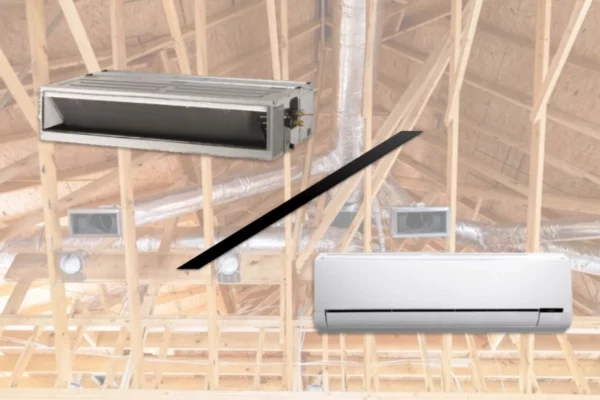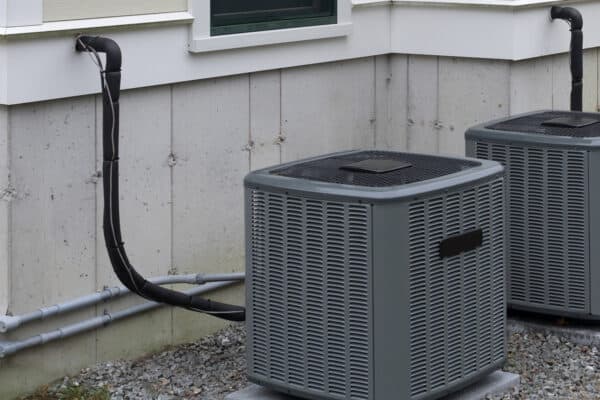How Air Conditioner Control Room Temperature?
We use a remote controller or a thermostat to set the temperature that we want for the air conditioner to cool our room. Then, how does the air conditioner know the current room temperature and controls it?
Most air conditioners control the room temperature using a thermostat. When a thermostat senses the room temperature reached the set temperature, it gives a signal to stop the air conditioner. Then, the thermostat sends another signal to run the air conditioner when the room temperature drop below the set temperature and the cycle repeat.
Some people misunderstood that their AC should cool their room to the temperature they set on the AC controller. While most of the time it is true but, it is not always the case.
How Air Conditioners Control Temperature?
Most air conditioners control the temperature using a return air temperature sensor. Conventional air conditioners cool a room until the return air temperature matches the set temperature and then stop. When the return air temperature gets higher than the set temperature, it runs again and the cycle repeats. On the other hand, inverter type air conditioners reduce cooling power to maintain the set temperature rather than stop.
However, not all air conditioners use a return air temperature sensor to control the temperature. Below are 3 types of temperature control method commonly used in air conditioning:
- Return air temperature sensor – Most air conditioners have a temperature sensor located at the return air section. It is assumed that the return air temperature represents the current room temperature. Hence, the installation of the AC must have good return air in order to better control the room temperature.
- Indoor unit room temperature sensor – Some air conditioners have a temperature sensor build inside the indoor unit to sense the room temperature. However, it requires the AC itself to be placed inside the room. Thus, it usually doesn’t apply to central air conditioners.
- Thermostat – Ducted air conditioners commonly use a thermostat to control temperature. The thermostat itself can sense its surrounding temperature. Thus, a thermostat must be located at a place where it is best to represent the room temperature.

How Well Do Air Conditioners Maintain the Room Temperature?
First of all, an air conditioner must be sized correctly in order to provide sufficient cooling to a room, let alone maintaining the room temperature. Generally, if an air conditioner can reach around 23°C during the hottest day, it is considered as “providing sufficient cooling” and “sized correctly”.
Conventional air conditioners or non-inverter air conditioners do a pretty bad job at maintaining a precise room temperature. When a room is cooled to the set temperature, a non-inverter AC shuts off its compressor and thus, stops the cooling. Then, the room gradually gets warmer. When the room temperature gets higher than the set temperature, the AC runs again.
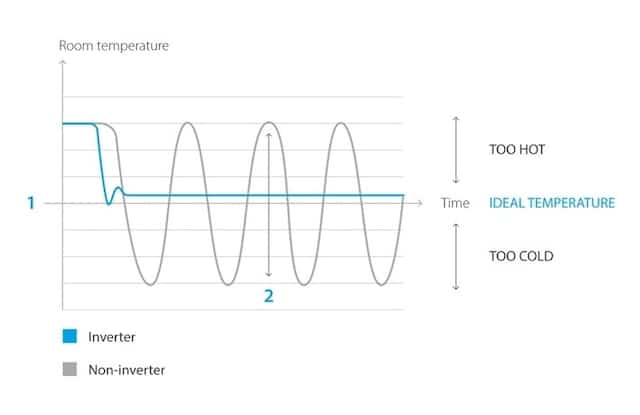
Hence, the temperature differences can be as much as 1°C below and above the set temperature. For instance, if you set at 24°C, it’ll stop at 23°C and run at 25°C. Why you might ask? Because it needs to protect its compressor. Frequently stop and run a compressor will shorten its lifespan. Therefore, if you use an incorrectly sized air conditioner, the temperature difference is greater.
On the flip side, inverter air conditioners are capable of regulating the speed of their compressor thanks to inverter technology. By controlling the compressor’s speed, cooling power can be controlled. Thus, inverter air conditioners are very good at maintaining a precise room temperature. Therefore, inverter type ACs provide more comfort than the non-inverter type.
In addition, basic central air conditioners usually can’t maintain a precise room temperature because they are relying on the average return air temperature of multiple rooms. Besides, the supply and return airflow must be balanced in a centralized air conditioning system. Otherwise, certain rooms will be much colder than the other rooms.
Do Air Conditioners Cool Faster with Low Temperature Settings?
Many people think that by setting the temperature at 16°C (or the lowest one), their AC will cool faster. However, it is not true. In fact, whether you set the temperature at 24°C or 16°C, your AC will take the same amount of time to cool your room.
How fast an air conditioner can cool a room mainly depend on the cooling capacity of the air conditioner and the amount of heat gain in the room. The higher the cooling capacity of the air conditioner, the faster the air conditioner cools the room. Also, the lesser the heat gain in the room, the faster the room cools.
What I meant by heat gain in the room is how much heat is coming into your room when you are using the air conditioner. For example, if you kept the windows open while using the AC, your room gains a lot of heat from the outside air and thus, the AC takes a long time to cool your room.
What Happen If the Set Temperature is Higher than the Room Temperature?
As mentioned earlier, non-inverter air conditioners will stop the cooling when the room temperature reaches the set temperature. If the set temperature is higher than the room temperature, the AC takes it as “overcooled”. So, the non-inverter AC simply…doesn’t run.
On the other hand, the compressor of inverter air conditioners does not stop even when the room temperature reaches the set temperature. Hence, if the set temperature is higher than the room temperature, the inverter air conditioner will reduce cooling power to the minimum and maintain it.
Do Air Conditioners Blow Air at the Same Temperature as the Set Temperature?
The air that blows out from the air conditioner is much colder than we think. On average, the off coil temperature is about 14°C to 16°C (off coil means after the cooling coil which is the supply air). However, because of reduced cooling power, the off coil temperature of inverter type air conditioners can be higher.
There is no direct relationship between the off coil temperature and the temperature that we set on the AC controller. Generally, air conditioners are designed to have a difference of 10°C between the off coil and on coil temperature (on coil means before the cooling coil which is the return air).
So, if your room is currently at 28°C and you set the AC temperature at 24°C, the air conditioner will not blow air at 24°C but around 18°C. However, typical home air conditioners usually can’t blow air at a temperature lower than 14°C.
Why Set at 24°C the Air Conditioner Consume Less Power than Set at 16°C?
As mentioned earlier, air conditioners stop/reduce cooling when the room temperature reaches the set temperature. If you set the temperature at 16°C, the AC will not reach it and it’ll continue to run at full capacity. Thus, consume lots of power.
Typically, home air conditioners may cool a room to about 22°C or 20°C at max. Hence, setting the AC at 16°C will force it to run at full capacity all the time. Therefore, it is recommended to set the AC temperature at between 24°C to 26°C for optimized power consumption.
What is the Meaning of the Temperature Displayed on the Controller?
Depending on the type of controller, the displayed temperature can be set temperature or room temperature or both. Most AC remote controllers only show the set temperature. So, the AC will try to cool a room to the set temperature.
Some AC remote controllers, especially ducted units, can display both the set temperature and the current room temperature. These controllers are typically mounted on a wall. They can sense their surrounding temperature and display it as the current room temperature just like a thermostat.
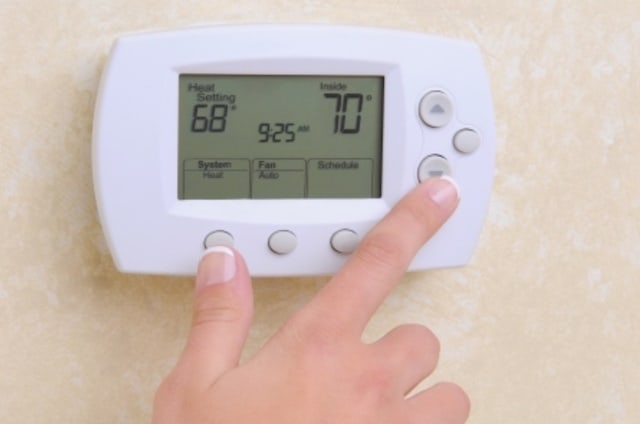
Nevertheless, all AC controllers will always display the set temperature. As for the room temperature display, it depends on the function of the controller which you may find it out by reading the user manual of the controller.
If you have anything to add (or ask) about this topic, leave a comment down below!


